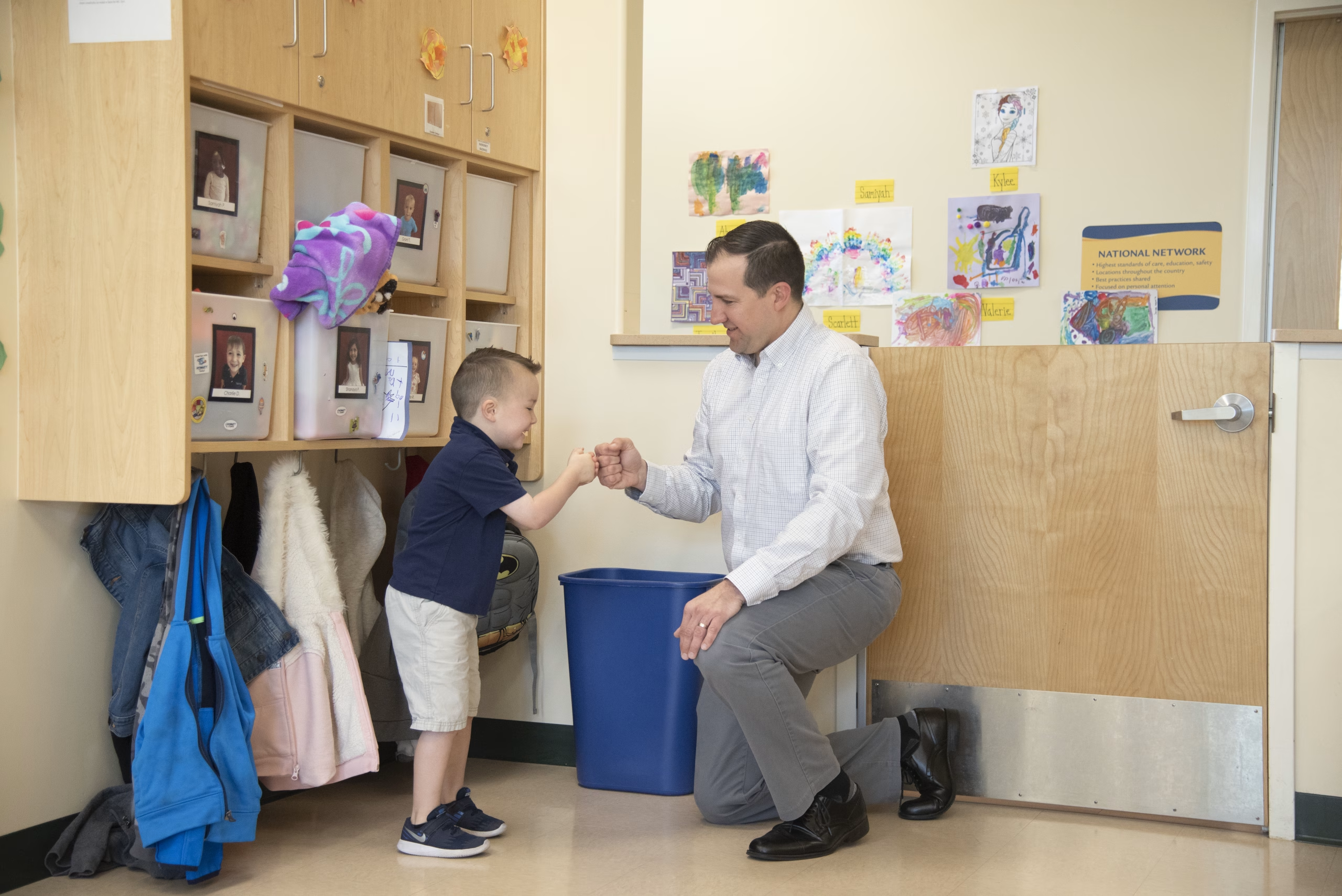
If you’ve ever eavesdropped on a preschooler’s phone or FaceTime conversation, you probably found it very entertaining, but also a little cringey. After all, young children are still learning the social graces of one-on-one conversations.
Our experts in the Kiddie Academy® Education Department offered up the following guidance on how to make virtual communicating a comfortable and worthwhile experience for kids of all ages.

Is It Worth Trying to Teach Your Child Virtual Etiquette?
As with any one-on-one interaction your child may encounter, you want them to be polite, responsive, well-mannered and cordial. The reality is, with younger children, some of these expectations can be developmentally inappropriate. In the early years (2s – preschool), your child’s receptive and expressive language skills aren’t fully developed. They don’t comprehend certain questions asked of them and will have difficulty responding appropriately. Or they may not respond at all.
Many young children become shy – reserved and uncomfortable – seeing themselves and others on a computer screen while others will become excited and chat away.
Don’t worry about your child not looking directly into the camera. Children have difficulty making eye contact in person. Looking into a small hole on a computer and being attentive enough to do so for the duration of a call may not be developmentally appropriate.
Tips For One-on-One Virtual Calls With Kids
It’s a big deal when children can see and talk to their friends one-on-one via the screen. Here are a few bits of advice on how to turn the calls into good experiences for everyone:
- Calls should be short. Recommended maximum times are two minutes for 2-year-olds; three-four minutes for 3-4-year-olds; five minutes for 5-year-olds.
- Your child may act silly or they may get shy and be more reserved than they would in person. That’s OK. Don’t force the interactions. Be gentle and supportive. Sometimes the adult may be the one holding the child back from being comfortable enough to interact with their friends. Find alternative ways for them to interact with friends – send letters, call on the phone, do a drive-by and talk from your car, etc.
- The interaction will be short and that’s OK, too. It may take more time to set it up the call than the call lasts.
- Avoid using the same space for one-on-one chats as you use for virtual learning. Try to separate the two so that your child is aware that one area is for learning and the other area can be for talking to friends.
- Encourage your child to share toys, books or anything that interests them with their friends.
- If possible, set up the computer so that the children may play together virtually and talk to one another as they play. It’s comforting to know that a friend is with you, even though it’s virtual.
- Set up times for your child to have virtual calls with relatives, too.
Looking for more news you can use?
We would love to send you our free monthly newsletter, Parenting Essentials! You’ll receive a newsletter by email, full of parenting advice, ideas and information, as well as articles about emerging trends in educational child care.





